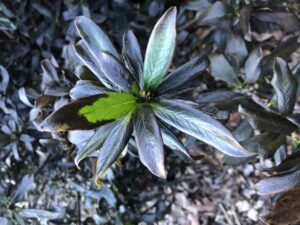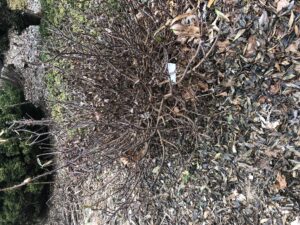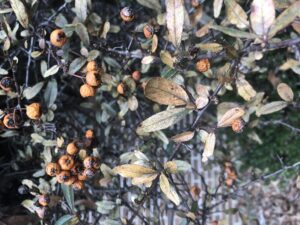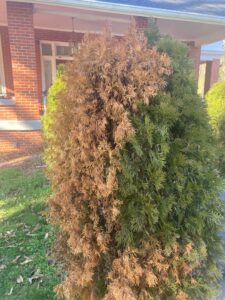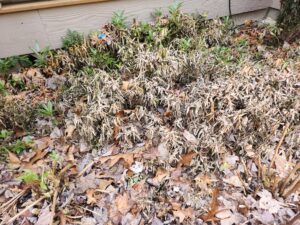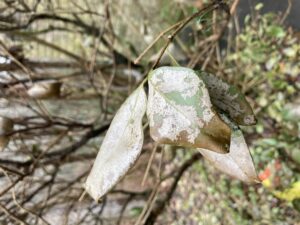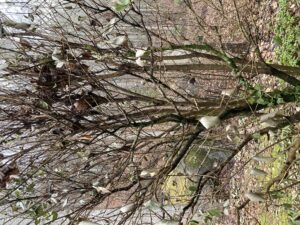Plant Health Alert – Will We See Cold Damaged Plants This Spring?
go.ncsu.edu/readext?905647
en Español / em Português
El inglés es el idioma de control de esta página. En la medida en que haya algún conflicto entre la traducción al inglés y la traducción, el inglés prevalece.
Al hacer clic en el enlace de traducción se activa un servicio de traducción gratuito para convertir la página al español. Al igual que con cualquier traducción por Internet, la conversión no es sensible al contexto y puede que no traduzca el texto en su significado original. NC State Extension no garantiza la exactitud del texto traducido. Por favor, tenga en cuenta que algunas aplicaciones y/o servicios pueden no funcionar como se espera cuando se traducen.
Português
Inglês é o idioma de controle desta página. Na medida que haja algum conflito entre o texto original em Inglês e a tradução, o Inglês prevalece.
Ao clicar no link de tradução, um serviço gratuito de tradução será ativado para converter a página para o Português. Como em qualquer tradução pela internet, a conversão não é sensivel ao contexto e pode não ocorrer a tradução para o significado orginal. O serviço de Extensão da Carolina do Norte (NC State Extension) não garante a exatidão do texto traduzido. Por favor, observe que algumas funções ou serviços podem não funcionar como esperado após a tradução.
English
English is the controlling language of this page. To the extent there is any conflict between the English text and the translation, English controls.
Clicking on the translation link activates a free translation service to convert the page to Spanish. As with any Internet translation, the conversion is not context-sensitive and may not translate the text to its original meaning. NC State Extension does not guarantee the accuracy of the translated text. Please note that some applications and/or services may not function as expected when translated.
Collapse ▲The recent single digit and below zero temperatures across the south have damaged a lot landscape plants. We are already seeing damage. Let’s hope it did not kill the plants outright.
The temperature dropped rapidly in many locations. In less than a day some places experienced a 40 degree drop in temperature. And let’s face it…it has not been this cold for many years. People have planted a great many non-cold hardy plants across the area and gotten away with it until now.

This well established fescue lawn was damaged by the recent cold. There will probably be losses of fall planted lawns because the new grass seedlings could not survive the cold.
Plants have a hard time reacting to rapidly declining temperatures. In normal situations, plants prepare for cold weather by hydrating the roots and fortifying the leaves to prevent leaf cells from freezing and bursting. This process is gradual and is part of the fall and winter dormancy mechanism in plants.
When temperatures fall as rapidly as they did recently around Christmas 2022, water freezes inside leaves and stems. The ice that forms inside plant cells damages the plant cell walls and the cell dies. When this happens leaves turn brown to black in evergreen plants such as hollies, laurels, and conifers and buds and stems can die in deciduous trees.
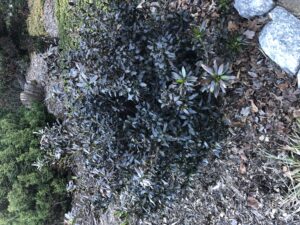
This Daphne odora, one of the author’s favorite garden plants, got frozen by extreme cold in December 2022. The picture was taken just after the cold event.
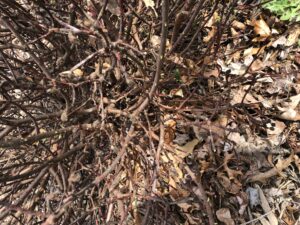
UPDATE!!! The frozen daphne is coming back as of early March 2023!!! Notice the little green leaves. This is why we recommend waiting until spring to cutback frozen plants.
All plants can suffer stem tissue damage leading to dead limbs and split bark. Thin barked species such as Japanese Maples will likely suffer the worst. Smaller diameter limbs likely were damaged by the freeze in all kinds of plants.
So what is a gardener to do? All that we can do is wait until spring to see what happens as plants come out of winter dormancy. Totally frozen evergreens like hollies may look terrible immediately with damaged blackened leaves but it is not recommended to prune the plants. It is possible that only the leaves are dead and that in the spring the tree will replace the leaves. If however the damage is more extensive, dead limbs will become obvious in the spring and these can be pruned.
In the spring, if there is damaged wood it can attract wood boring insects. If you live in an area where ambrosia beetles are prevalent, a preventative bark treatment with bifenthrin may be advisable on susceptible plants. If you run a woody plant nursery or landscape company this preventative insecticidal treatment to deter wood boring insects in early spring on important plants could save growers money.
In past freeze events we have seen non-cold hardy plants killed to the ground. Usually the plants regrow from the roots. However this sets woody plants back years and can be disruptive to landscapes. The good news is that most perennial flowers are safely dormant underground. Warm season grasses such as zoysiagrass and bermudagrass may have been damaged as well. If you do see cold damaged plants, please let me know so we can document the damage here in our office.





